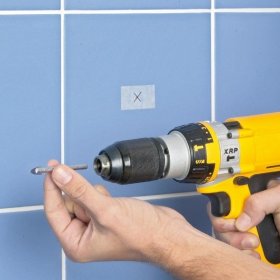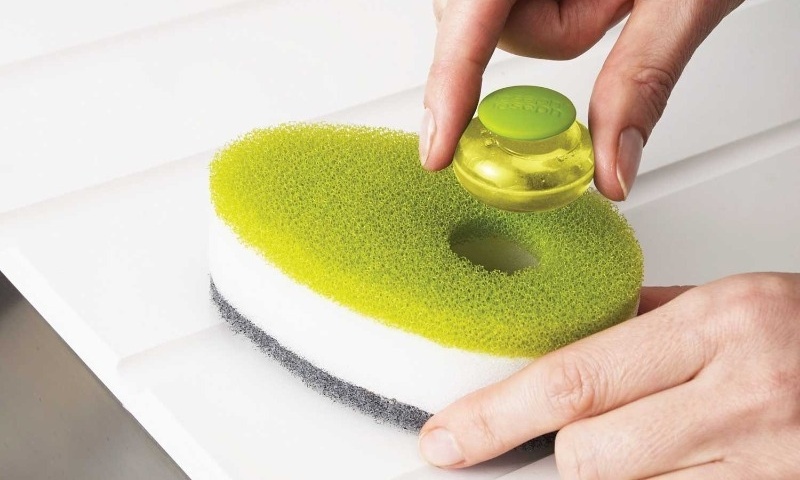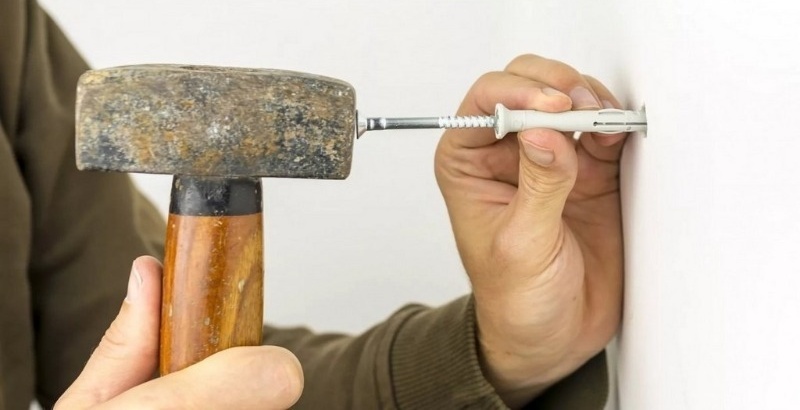How to make a hole in a tile without a drill

It may be necessary to drill a hole in a tile for various reasons: installing or replacing sewer pipes, installing a heated towel rail or shelves. But the right neat drill is not always at hand. Deformations and cracks can be avoided by competently using the alternative.
How can I replace the drill
A good replacement for a classic drill can be the ML self-tapping screw for a metal profile. Often these remain after the installation of frames for drywall constructions.
A good screw is that it has a specific sharpening on the tip, which looks very similar to a special drill for tile. Using it, you can make a small neat hole.
Thanks to its small turns, it easily enters ceramics without exerting excessive physical pressure. If you need to make a larger hole, then use different screws, gradually increasing the thickness.
How to prepare a self-tapping screw
Before using a self-tapping screw instead of a drill, it is necessary to prepare it. The most important thing is to securely fasten the tool inside the chuck to avoid falling out, shaking, which can lead to deformations and chips.
The preparation process is simple:
- It is necessary to completely remove the screw head.
- Wrap several layers of wire onto the upper turns
- Reliably install a self-tapping screw with a wire in the cartridge.
A self-tapping screw under the influence of centrifugal force can fly out, or begin to "walk". Before carrying out work, make sure that the tool is securely locked.
Drilling process
The drilling process is not much different from the classic, but it is worth following a number of important rules:
- not less than 2 cm indent from the edge of the tile;
- hold the tool exactly at an angle of 90 °;
- it is impossible to change the direction of drilling;
- masking tape or patch in place of the hole will help eliminate excess slipping;
- use marks;
- working with a drill is better at low speeds;
- dust needs to be blown out, otherwise the self-tapping screw will come off;
- pressure, shock and excessive shaking are not allowed.
Work without a special drill, even on metal or stone, requires considerable skill and care, to say nothing of such fragile material as tile.
If the tile has not yet been installed on the wall, you need to drill it on a flat floor with a chipboard.
How effective is the method
In the absence of an alternative, a drill from a self-tapping screw can quite help out. But this method cannot be considered 100% effective.
Tile is a very fragile material and it is not worth risking in this way. Before you drill the required hole, be sure to practice on the consumable or inconspicuous area of the tile.
The holes thus obtained will be neat, but not deep. If there is a thick layer of primer under the tile, and the fastening is wear-resistant, you will have to look for something more authentic. In addition, in the process, the self-tapping screw is erased and 2-3 may be needed per hole.
Special drills will be more effective and safer for tiles: with diamond spraying, ballerinas, with a victory tip. There are special drills for tiles: such a drill does not have a thread, and there is a pointed soldering on the tip. There are tetrahedral tips (feathers), but they are worse, since it will be difficult to sharpen them if necessary. They can also be used when drilling mosaics or glass.
A drill for a tile made of a self-tapping screw is not an alternative, but rather a forced replacement when the original is lost or broken, when the work is urgent. Otherwise, it is better to purchase special drills in advance. They will cost less than a cracked tile, repair and a spoiled mood.


